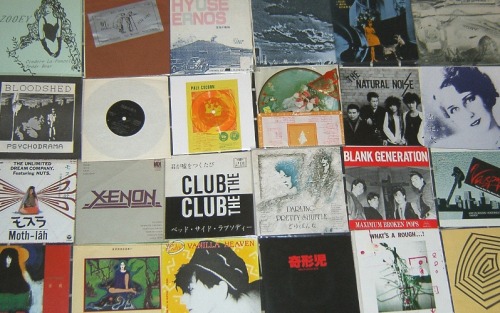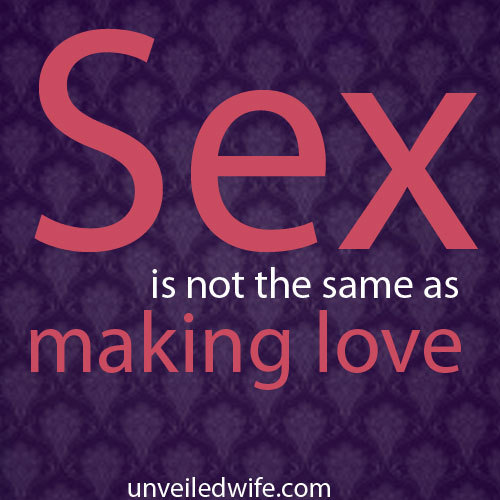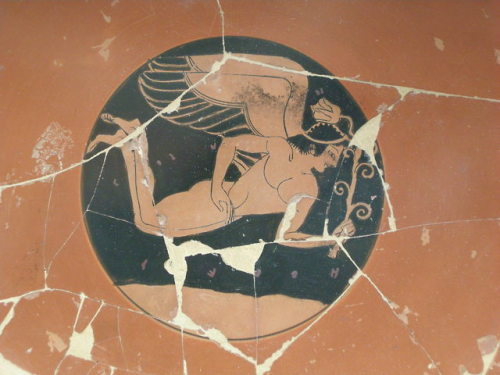#libido
In this article, we won’t be exploring the introverted and extroverted types so much as the specific mechanisms of introversion and extroversion. In order to isolate these concepts, any time I mention the respective types, imagine them as hypothetical puretypes. A normal type has a conscious mix of both introverted and extroverted factors. Also remember that whatever an individual is consciously, his unconscious compensates him by containing the opposite. So, an introvert is an extrovert in his unconscious, and vice versa.
Jung calls introversion and extroversion the “inward-turning of libido” and “outward-turning of libido” respectively. What he means by libidoorpsychic energy is not the same as Freud’s still-popular concept of sex drive – instead, it is an abstract concept designating the weight of value and interest given to any particular mental content or external object. For example, a psychological function with a large sum of libido is going to be at the forefront of consciousness, highly active and producing thoughts, feelings, hunches, or sense-impressions that are intrinsically interesting and valuable. The unconscious, too, has a dormant sum of libido – dormant, that is, until it activates a content like a complex or a strong emotion, which then bursts into consciousness uninvited. Conscious libido is essentially willpower; unconscious libido is akin to instinctual impulses.
Therefore, the two mechanisms designate the general flow of energy, whether it activates and confers value to external objects, or does the same to inner contents. Extroversion is an interest in the external world, in the multiplicity of objects and people, focussing on their specificity and differences. The Ego is constantly seeking to relate to the object in some way, to affect it or be affected by it, and it finds its identity in its relation to the ever-changing environment. Introversion is an interest in the inner world, on emotion-toned complexes and inner archetypes. It focuses on the similarities between things, so that it can organise them internally under the header of general ideas, which are derived in essence from the archetypes. It seeks to detach itself from the outside world, to keep the inner world in perfect stasis and harmony, and finds its identity in the changelessness of the Ego.
The two mechanisms play an important role in the emotionalityof a personality. Extroversion, as the mechanism that bridges the individual and the outside world, is associated with how the individual reacts emotionally to external stimuli. Extroversion is characterised by a quick, open, and emotion-laden reactivity. We can call this the affectiveoremotionalattitude. Introversion, on the other hand, we can call the detachedattitude, as it seeks to sever ties with the outside world as much as possible. However, while calling the extroverted and introverted types “affective” and “detached” might work at a glance (extroverts appearing active and expressive, introverts appearing passive and inscrutable), it doesn’t hold up to deeper investigation. Introverts often experience the most intense emotions, while extroverts, having a conscious and well-adapted affectivity, dispense with them quickly and easily. This is because the introvert’s conscious detached-ness is compensated by a large unconscious affectivity (extroverted attitude), which finds little expression and, worse still, is empowered by the unstable, primal libido of the unconscious. The extrovert, on the other hand, is unconscious of his detached inner thoughts and feelings (introverted attitude), which have their own morbid character, but not the emotional one of the introvert’s.
This dynamic of the unconscious attitude has a reinforcing effect on the individual’s conscious personality. This is due to the projectionof unconscious contents. When an extrovert projects his unconscious onto external objects, he sees in them the image of his own unconscious personality – that is, passive, detached, inert. Because of the outside world’s apparent harmlessness, he is even more inclined to go out and interact with it freely, and in the process he reclaims his own unconscious inner world. The introvert unfortunately sees the object as having his own unconscious affectivity. The outside world is active and animated, full of things that are dangerous and fearful, reflecting the primal, daemonic nature of the unconscious. This validates the introvert’s impulse to withdraw and defend himself against the outer onslaught, which again represents his own unconscious life. (Remember, these are pure types – the normal individual, while still not seeing objectively, projects a middle-of-the-road mixture of characteristics onto objects.)
Finally, Jung posits that the introvert is characterised by a great psychic tension or inhibition as compared to the extrovert. This is because he is always worried, consciously or unconsciously, that an external stimulus will trigger or disrupt an inner complex, or even worse, one of those volatile, primal affects. An extrovert, who acts in direct relationship to the external world, does not share this fear, and as a result is the more relaxed and disinhibited type. However, each type can act like the other in certain circumstances. An introvert in a safe and familiar environment will be allowed to forget his complexes and relax, while an extrovert left alone to contemplate his own complexes – which are as dangerous and daemonic as the introvert’s affectivity – will jump at the smallest noise.
To recap: Introversion and extroversion designate the movement of libido (= interest) in the psyche. Extroversion is always related to objects; it is the more affective (emotional) and relaxed mechanism. It projects the image of a passive, inert object. Introversion is related to inner contents; it is the more detached and tense mechanism. It projects the image of an active, dangerous object. An introverted attitude is compensated by an extroverted attitude in the unconscious, and vice versa. In a normal type, both the conscious and unconscious personalities will have a mix of both mechanisms.
Libido is not the same as sex favorablility. You can have a high libido without ever wanting to have sex/do sex things and you can have a low libido and want to do sex things.










OnlyOneOf – libidO
Will be adding more items in the next couple of days …among other things
Update 15/12
Sorry, PALE COCOON cassette is now sold. But I’ll be adding some more stuff soon …1st SURREALISTIC MEN EP, among other things.
Post link
“SEX” ÜBERWINDEN LERNEN DURCH EHRLICHE, OFFENE & BEWUSSTE ERZIEHUNG ZUR LIEBEVOLLEN KÖRPERLICHKEIT:
“Sex” ist eine Krankheit, die durch Erziehung übertragen wird, und die tödlich endet !
(Ver-)Schweigen, Verstecken, Verheimlichen, Verbergen, Vertuschen, Verbieten, (Be-)Drohen & Bestrafen sind mit Sicherheit die UNgünstigsten, UNgeeignetsten Erziehungs-Strategien, um diese (vom menschen geschaffene) Erfindung names “Sex” jemals (endlich) als leidvolles Mißverständnis, als tragischen Irrtum, als gefährlichen Rausch & als schmerzliche Vergewaltigung der körperlichen Liebe ERkennen & ANERkennen zu lernen. Dasselbe gilt für die Sucht nach ABSTINENZ von “Sex” ! Kinder kann man letztlich NICHT zu etwas “erziehen”, dem man SELBER schon nie gerecht wird. Wie willst du deine Nachkommen zu etwas “erziehen”, was du SELBST NICHT LEISTEST, bzw, nicht leisten KANNST ??? :-/ Kinder machen uns schlichtweg einfach alles NACH … auch unsere vorgelebte Heuchelei & Inkonsequenz als Erwachsene & als Vorbilder. Das Gefährlichste am “Sex” ist sicherlich die UNbewußt unterstellte Annahme, daß es ihn als natürliches, echtes BEDÜRFNIS überhaupt GEBE … genauso wie die ABSTINENZ davon ! :-o Die Hauptgefahr geht also von dem Irrglauben der Menschen aus, soetwas wie “Sex” , aber auch soetwas wie “Keuschheit”, oder “Asexualität” EXISTIERE per se ! OHNE unsere ungeprüfte, unbewußte Unterstellung, daß dem “Liebemachen” NICHTS Liebevolles innewohne, könnte “Sex(ualität)” niemals SEIN ! Ergo entfiele im Umkehrschluß auch jedwede “Notwendigkeit” selbigen durch Abstinenz, Enthaltsamkeit & gewaltsamen Verzicht zu VERMEIDEN !
WIR SELBST machen den “Sex” überhaupt erst MÖGLICH, …eben durch diese Unterstellung des LIEBLOSEN an der Körperlichkeit … und eben MITHILFE von: (Ver-)Schweigen, Verstecken, Verheimlichen, Verbergen, Vertuschen, Verbieten, (Be-)Drohen & Bestrafen ! Dies schafft Verstörung, Verwirrung, Verunsicherung … Scham- & Schuldgefühle … Depression, Aggression & Rausch …und das wiederum lenkt uns von unseren eigentlichen Gefühlen von ANGST & TRAURIGKEIT (angesichts dieser sich massivst NICHT erfüllenden Bedürfnisse) noch weiter AB !!!
Post link
Quand la libido du couple est en berne, met de l’huile petit homme, met de l’huile
The relationship and correlation between the deities of Hermes and Eros is a very strong one. Both deities get to maintain their primordial and rather unlimited character throughout the ages, the archetype of the “divine child” is one associated with both of these deities, while playfulness and a certain vibe of mystery permeates their nature. Hermes is deeply connected with the life force that is libido, his presence is shown in antiquity simply with upright pieces of wood or stone resembling the phallus, these pieces were called “hermes”. The name of Eros is intertwined with its significance, Eros possible means “demanding love”, indicating the urgency of the phenomenon. Both Hermes and Eros are complicated in their understanding or even acquaintance, their nature is confusing and delicate, it’s as if the universe gets knows a specific frequency, a melody concerning the eternal relationship of love, thievery and idyls. The male key of this melody is Hermes and the female key is Aphrodite, mother of Eros, when these powers become unified Hermaphroditus occurs.
Eros flying above the sea and holding a flower (love gift). Tondo of an Attic red-figure kylix by Kachrylion(potter), ca. 510–500 B.C. Archaeological Museum of Florence.
Post link















